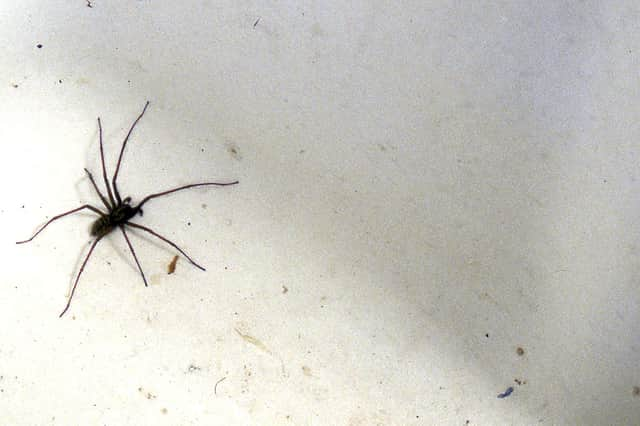Are our hairy-legged house guests as bad as we think? | Emma Kay


A quick turn of the tap and if you are lucky, they may crumple up and carry away down into another world beyond the plughole.
The less phobic may deign to produce a helpful cup and tease the creature gently in and chide your for your haphazard spider cruelty only to bodily throw said spider like they are competing in a do or die discus tournament out of the gaping window.
Advertisement
Hide AdAdvertisement
Hide AdNot to worry though, this persistent airborne spider will find their way back in.
I'm pretty sure my fiancé has thrown out the same spider seven times before.
One visit for each day of the week. Hooray.I face this common foe most mornings, sitting in the bathtub like a haphazard splotch.
I even have a designated spider cup now ready to fling the intruder out of the window.My house is scented with conkers and peppermint in a desperate bid to drive away potential creepy-crawlies. But are spiders all the horror we paint them out to be?An oddly touching and rather beautiful fossil has been discovered that gives us physical evidence that ancient spiders were pretty amazing mothers.
Advertisement
Hide AdAdvertisement
Hide AdThey guarded their egg sacs with their lives and were exceedingly caring with their young.
This 99 million year old fossil shows an ancient arachnid encased in a frozen tangerine coloured amber tomb, forever preserving her last moments as a monumental mother.
SEE MORE: I microwaved my broccoli and guess what fell out? The tiny spiderlings crouched with her belong to a bygone species of spider known as Lagonomegopidae which are distinguished by their huge reflected eyes.
These nimble nocturnal hunters existed long before the T-Rex. It is really quite incredible to imagine that the common house spider that creeps around our dwellings is a predator and mother millions of years old.How long the tiny spiderlings stuck around dear old mum is unclear, but we should revaluate our opinions of these so-called horrible house guests.
So what about those of us who are not on the internet?
Advertisement
Hide AdAdvertisement
Hide AdApps and technology are convenient but they also heavily penalise those without a digital option.
There is a very real disadvantage to those who do not plug in and have access to the internet. Many rely on libraries for internet access for emails, jobs or to simply to pay a bill. Can you imagine your online time being governed by opening hours?
Everyone deserves to be treated fairly and know the best ways to save on their energy bills.
You cannot phone around as comparison services only exist in the digital world.
Advertisement
Hide AdAdvertisement
Hide AdIt can cost £100 more per year to pay by cash or cheque, that is quite a difference!
Energy companies cannot assume everyone has online access.
How do we dry clothes now the rainy season has set in?
It is precipitation for the nation! A swirling mantle of tempest-like rain. Soaking through everything, making the grass sodden and useless.
The wind is a constant force, ripping off the washing with ease and claiming an innocent pair of trousers to the mud and wet. How many of us have had a favourite top lost to the soggy garden?
We suffer and shiver and try to find ways to dry our clothes. It can become one of the biggest chores in the house. When a slither of sunshine comes out, we rush outside in the vain hope of drying our washing. Maybe we could rely on the tumble dryer but ever-increasing energy bills mean we are a bit snookered. What are we supposed to do?
A message from the editor, Mark Waldron
Advertisement
Hide AdAdvertisement
Hide AdWe’ve slashed the cost of digital subscriptions to our website by 50 per cent for a limited time.
You can now subscribe here for unlimited access to our online coverage, including Pompey, for less than 13p a day.
Comment Guidelines
National World encourages reader discussion on our stories. User feedback, insights and back-and-forth exchanges add a rich layer of context to reporting. Please review our Community Guidelines before commenting.